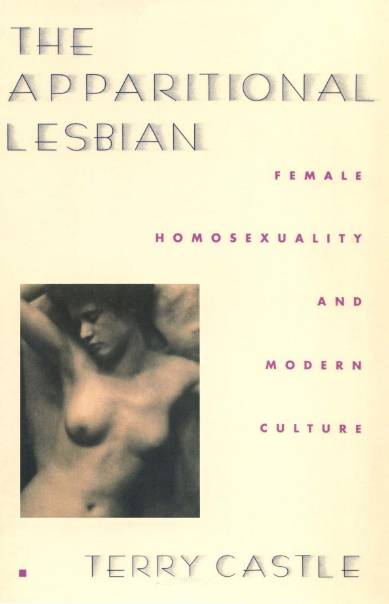The Apparitional Lesbian
Female Homosexuality and Modern Culture
Terry Castle
With the recent explosion in the number of gay and lesbian fiction titles, it should come as no surprise that next would follow a spate of similar studies from academia. Here is yet another. Castle (English, Stanford) decodes the ciphers of our culture to find the ‘apparitional lesbian’ everywhere haunting our history, literature, and music. From essays on Marie Antoinette as the patron saint of lesbianism to the alluring ‘homovocality’ of mezzo-soprano Brigitte Fassbaender, Castle describes how the dominant straight culture has portrayed the lesbian over the past 300 years. One might argue with some of her assumptions, for example, that lesbian desire only emerges in the absence of male bonding. Overall, however, Castle’s acute observational powers present an insightful overview of early 20th-century lesbian fiction, and her incisive historical perspective presents a fascinating study of the haunted presence of the lesbian throughout Western literary history in general. Informative and thought-provoking, her book is highly recommended for academic libraries and larger collections with interested lay readers.
– Jeffery Ingram, Newport P.L., Ore.
Copyright 1993 Reed Business Information, Inc. –This text refers to an out of print or unavailable edition of this title.
From Kirkus Reviews
Lively essays (some previously published in the Kenyon Review, etc.) on the representation of lesbians in literature and history. Readers acquainted with gay history will be on familiar ground here, since Castle (English/Stanford; the scholarly Masquerade and Civilization, 1986, etc.) includes the likes of Greta Garbo, The Bostonians, and The Well of Loneliness among her subjects. Her thesis is that lesbians have been “ghosted”–made into apparitions, visible but not quite present–throughout history, and she finds numerous examples of homosexual women being described as “spectral” or, like The Well of Loneliness’s Stephen Gordon, as “earthbound spirits.” Castle’s “ghosting” looks suspiciously like a fancier wording for the well-explored phenomenon of “lesbian invisibility,” but the author (who’s openly gay) infuses new life into the concept by underlining various characters’ feistiness and “gaiety” rather than their victimization. But Castle often reads too much between the lines: One would never guess that The New Yorker’s Janet Flanner was a lesbian simply by studying her articles. Moreover, she sometimes misreads other historians or literary critics: Lillian Faderman’s claim, for instance, that the 19th-century English Ladies of Llangollen lacked a “lesbian consciousness” somehow becomes a straw man that the author dubs the “no-sex-before-1900 school.” But Castle’s forte- -the use of examples from her own life–underlines her points and makes her concluding chapter, “In Praise of Brigitte Fassbaender (A Musical Emanation),” her best, as she deftly mixes autobiographical revelation and literary theory while analyzing female fans of operatic divas, in a kind of lesbian equivalent of Wayne Koestenbaum’s The Queen’s Throat. Not groundbreaking, but Castle’s blend of solid research and clear, accessible prose may win her an enthusiastic readership. (Thirty illustrations) — Copyright ©1993, Kirkus Associates, LP. All rights reserved. –This text refers to an out of print or unavailable edition of this title.
Check for it on:
Details
| ISBN | 231076533 |
| Genre | Lesbian Studies |
| Publication Date | Dec-95 |
| Publisher | Columbia University Press |
| Format | Trade Paperback |
| No. of Pages | 307 |
| Language | English |
| Rating | NotRated |
| BookID | 601 |

